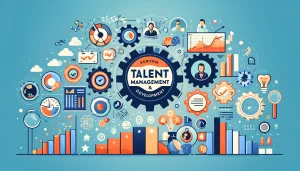A Leave Management & Remuneration Tracking system is a comprehensive software solution designed to streamline and automate the processes related to employee leave management and remuneration tracking within an organization. Here are the key features and functionalities typically found in such a system:
Leave Requests:
Employees can submit leave requests through the system, specifying the type of leave (e.g., vacation, sick leave, maternity/paternity leave) and the dates.
Leave Balances:
Employees can view their current leave balances, including accrued leave, used leave, and remaining leave.
Leave Policies:
Configurable leave policies define rules for accrual, carryover, maximum balances, and eligibility criteria for different types of leave.
Approval Workflows:
Automated workflows route leave requests to managers or supervisors for approval, with options for escalation in case of unavailability.
Notifications:
Automated notifications keep employees and managers informed about the status of leave requests and upcoming leave schedules.
Remuneration Tracking Features:
Salary and Compensation Management: Track salary details, compensation structures, allowances, bonuses, and deductions for each employee.
Payroll Processing:
Calculate employee salaries, wages, and incentives based on attendance, leave taken, overtime, and other factors.
Tax Management:
Deduct income tax, social security contributions, and other statutory deductions from employee salaries in compliance with local regulations.
Benefits Administration:
Manage employee benefits such as health insurance, retirement plans, and other fringe benefits, including enrollment, eligibility, and deductions.
Expense Reimbursement:
Track employee expenses, process reimbursement claims, and reimburse employees for business-related expenses incurred.
Salary Reviews:
Schedule and conduct periodic salary reviews, performance appraisals, and compensation adjustments based on merit, tenure, or performance metrics.
Payment Processing:
Generate pay slips, direct deposit files, and payroll reports for processing salaries through the organization’s payroll system or external payroll service provider.
Integration with HR Systems:
Integrate leave management and remuneration tracking with other HR systems such as employee databases, time and attendance systems, and performance management platforms.
Reporting and Analytics:
Generate reports and analytics on leave utilization, attendance patterns, overtime costs, salary distribution, and compliance metrics to monitor workforce trends and make data-driven decisions.
Compliance and Security:
Compliance Management: Ensure compliance with labor laws, regulations, and industry standards governing leave entitlements, working hours, minimum wages, and taxation.
Data Security:
Implement robust security measures to protect sensitive employee information, payroll data, and financial transactions from unauthorized access, data breaches, and cyber threats.




